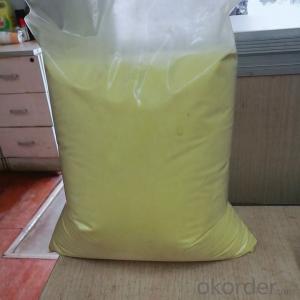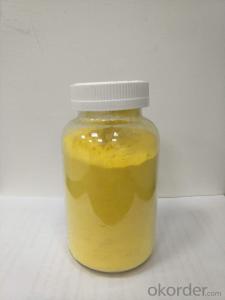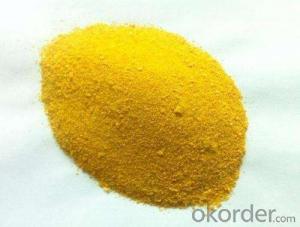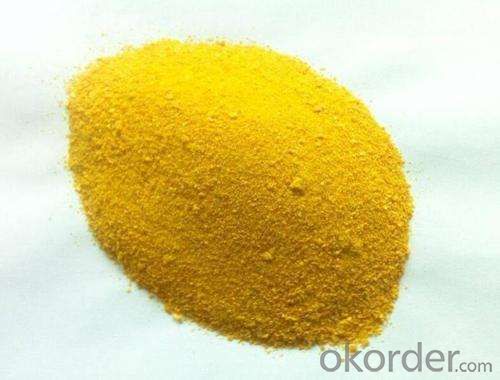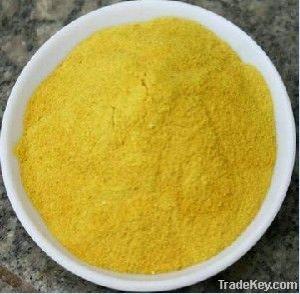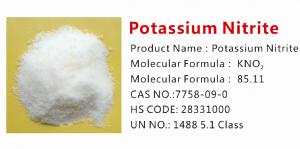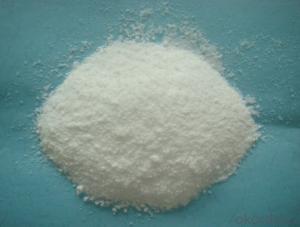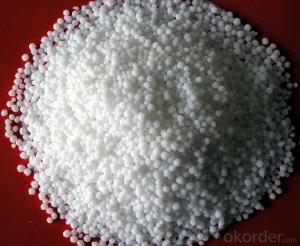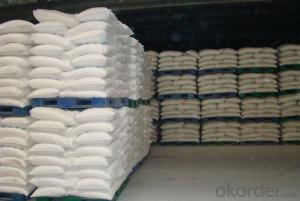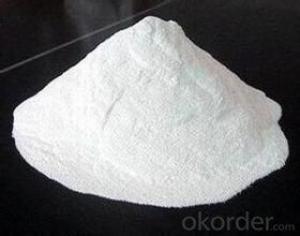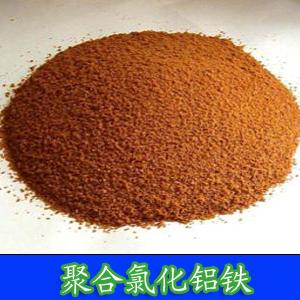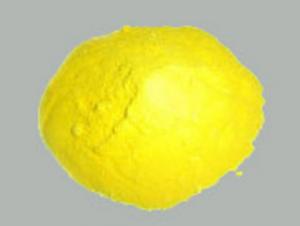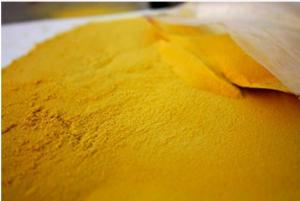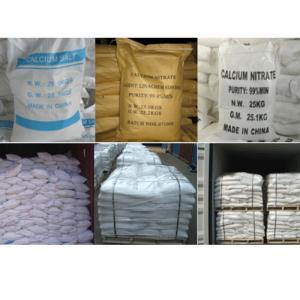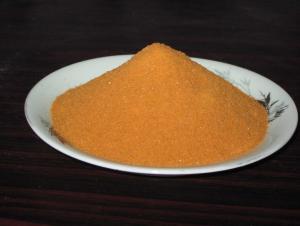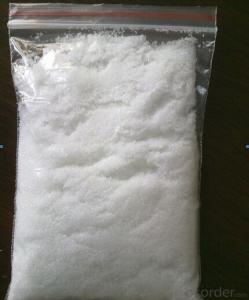Water Treatment Chemicals Poly Aluminum Chloride
- Loading Port:
- China main port
- Payment Terms:
- TT or LC
- Min Order Qty:
- 50 m.t.
- Supply Capability:
- 10000 m.t./month
OKorder Service Pledge
OKorder Financial Service
You Might Also Like
High Purity Poly Aluminium Chloride (Spray Drying Type, CAS.No.1327-41-9)
This product is manufactured by spray drying process and raw materials of good quality. It is widely applied in the drinking water and top-quality water treatment.
Properties
1. Appearance: White Powder
2. Made from pure raw material
3. Used for drinking water treatment and paper mills as retention agent
Specifications
Item | Index |
Al2O3(%) ≥ | 29 |
Basicity (%) | 50-80 |
Insoluble substance (%) ≤ | 0.5 |
PH(1% water solution) | 3.5-5.0 |
The product can be made upon customers' special request.
Application Method & Notes
1. Dilution is necessary before dosing for the solid product. The normal dilution ratio is 2%-20% (based on weight percentage).
2. The specific dosage is based on the flocculation tests and trials by the users. The usual dosage of is 1-15 g/ton.
3. The product can not be stored with other chemicals.
4. The product is packed in inner plastic bags and further in polypropylene woven bags, with each bag containing 25 Kg or 500Kg.
5. The shelf life is one year. The product should be stored in a dry and ventilated place, but the effect will not be affected even if it gets wet.
Poly Aluminium Chloride
(Spray Drying Type, for drinking water,CAS.No.1327-41-9)
This product is manufactured by spray drying process and raw materials of good quality. It is widely applied in the drinking water and top-quality water treatment
Properties
1. Appearance: Light Yellow Powder
2. It can lead to quick formation of flocks with big size and rapid precipitation.
3. Used for drinking water treatment.
Specifications
ITEM | SPECIFICATION |
Appearance | Light Yellow Powder |
Al2O3%, min | 29 |
Basicity | 40-90 |
Insoluble %, max | 0.6 |
PH (1% solution) | 3.5-5.0 |
NH3-N, max | 0.01 |
As, max | 0.0002 |
Cr6+, max | 0.0005 |
Hg, max | 0.00001 |
Pb, max | 0.001 |
Cd, max | 0.0002 |
The product can be made upon customers' special request.
Application Method & Notes
1. Dilution is necessary before dosing for the solid product. The normal dilution ratio is 2%-20%(based on weight percentage).
2. The specific dosage is based on the flocculation tests and trials by the users. The usual dosage of is 1-15 g/ton.
3. The product can not be stored with other chemicals.
4. The product is packed in inner plastic bags and further in polypropylene woven bags, with each bag containing 25 Kg or 500Kg.
5. The shelf life is one year. The product should be stored in a dry and ventilated place, but the effect will not be affected even if it gets wet.
Poly Aluminium Chloride
(Spray Drying Type, for industry water, CAS.No.1327-41-9)
This product is manufactured by spray drying process and raw materials of good quality. It is widely applied in the process water and waste water treatment.
Properties
1. Appearance: Light Yellow Powder
2. It can lead to quick formation of flocks with big size and rapid precipitation.
3. It has wide-range adaptability to the waters at different temperatures and a good solubility.
Specifications
Item | Index |
Appearance | Light Yellow Powder |
Al2O3 (%) ≥ | 30 |
Basicity (%) | 40-90 |
Insoluble substance (%) ≤ | 0.3 |
PH(1% water solution) | 3.5-5.0 |
The product can be made upon customers' special request.
Application Method & Notes
1. Dilution is necessary before dosing for the solid product. The normal dilution ratio is 2%-20% (based on weight percentage).
2. The specific dosage is based on the flocculation tests and trials by the users. The usual dosage of is 1-15 g/ton.
3. The product can not be stored with other chemicals.
4. The product is packed in inner plastic bags and further in polypropylene woven bags, with each bag containing 25 Kg or 500Kg.
5. The shelf life is one year. The product should be stored in a dry and ventilated place, but the effect will not be affected even if it gets wet.
- Q: Inorganic salt of the inorganic salt function
- Participate in and maintain the metabolic activity of the organism.
- Q: For patients with ulcerative colitis, which inorganic salt foods can eat?
- Human nutrient needs a variety of inorganic salts (also known as minerals), part of the food from the moving, plant tissue, part of the water and salt. The chemical nature of inorganic salts in food is very stable, not like vitamins as heat, light, oxygen and decomposition of the role of oxidation, but if the processing method is not appropriate, will cause many losses.
- Q: What is the time when the maximum number of inorganic salts is needed
- Plant inorganic salts are the most nitrogen, phosphorus and potassium containing inorganic salts, if any lack of plant will affect the normal growth.
- Q: Is it possible to adjust the internal temperature of the carbohydrate in the vacuole
- multi-cell plant cells are living in the individual within the water environment, but this environment with the human body's internal environment can only be similar is not the same, and plant cells and no extracellular liquid this argument.
- Q: Why inorganic salt waterproof coating does not apply to roof waterproofing
- Inorganic salts waterproof coating to waterproof agent-based, and the roof may produce vibration or displacement, the general selection of waterproofing membrane and flexible waterproof coating.
- Q: By balancing the benefits of dietary supplementation with inorganic salts, what are the advantages and disadvantages of taking health care agents?
- There will be no imbalance in the state, and those survey reports are often too exaggerated unbalanced side to emphasize the use of a balanced diet. You may want to talk about how the natural diet through the general way to add the advantages of inorganic salts, and the advantages and disadvantages of taking health care agents
- Q: If you boil down salt to a vapor form and breathe it in, can it kill you? or do you have to mix it with another chemical for it to become deadly. (Or will the vapor be so hot it will burn your lungs)
- The boiling point of inorganic salts is extremely high due to the strength of their ionic bonds. The temperatures will kill you.
- Q: Indicating the organic compounds and inorganic salts in the boiling point, melting point and solubility of what is the difference
- Organic compounds are mainly covalently bonded, the mutual attraction between molecules is very weak, so its melting point, low boiling point, generally insoluble in water and soluble in organic solvents. Inorganic salts with ionic bonding, positive and negative ions electrostatic attraction is very strong, so the melting point, boiling point is very high, usually insoluble in organic solvents and soluble in water.
- Q: What is the difference between "organic salt" and "inorganic salt"? What is the difference between "organic salt" and "inorganic salt"?
- Inorganic salts are inorganic acids (hydrochloric acid, sulfuric acid, nitric acid) with alkali generated by the reaction of the salt is called inorganic salts. Inorganic salts are salts that do not contain carbon, and organic salts are carbon-containing but do not include carbonates.
- Q: Why vegetables and fruits contain rich inorganic salts
- Because they are plants! From the biological point of view, they are the nature of the organic matter into inorganic salt carrier
Send your message to us
Water Treatment Chemicals Poly Aluminum Chloride
- Loading Port:
- China main port
- Payment Terms:
- TT or LC
- Min Order Qty:
- 50 m.t.
- Supply Capability:
- 10000 m.t./month
OKorder Service Pledge
OKorder Financial Service
Similar products
Hot products
Hot Searches
Related keywords
